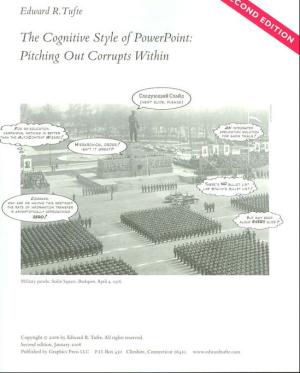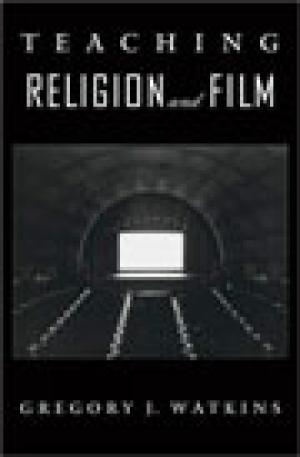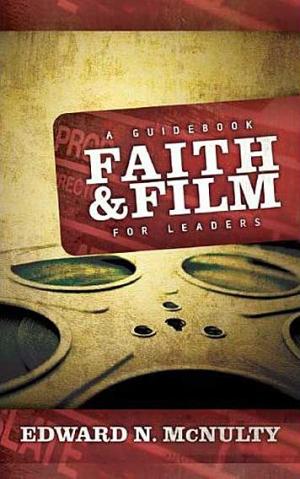Resources
One page Teaching Tactic: providing a series of web pages for students to visit and respond to in online posts.

In corporate and government bureaucracies, the standard method for making a presentation is to talk about a list of points organized onto slides projected up on the wall. For many years, overhead projectors lit up transparencies, and slide projectors showed high-resolution 35mm slides. Now "slideware" computer programs for presentations are nearly everywhere. Early in the 21st century, several hundred million copies of Microsoft PowerPoint were turning out trillions of slides each year. Alas, slideware often reduces the analytical quality of presentations. In particular, the popular PowerPoint templates (ready-made designs) usually weaken verbal and spatial reasoning, and almost always corrupt statistical analysis. What is the problem with PowerPoint? And how can we improve our presentations? This slim volume from legendary "information design" guru Edward Tufte answers these questions with Tufte's usual wit, concision, and style. (From the Publisher)
This article discusses ways in which modern online information technologies may be used to enhance students' understanding of Chinese religions and religious texts. This discussion is predicated upon a model of linguistic communication that places significant weight on the structures and "sedimented presuppositions" of language in determining the meanings of discourse. Assignments are presented that use online technologies to give even beginning students insight into the presuppositions of Chinese religious discourse, while also allowing them to explore, kinesthetically, one of Confucianism's central practices, the reading and writing of Chinese characters. Appendices providing additional materials related to the course are available online: http://www.wabashcenter.wabash.edu/journal/article2.aspx?id=14153.
New technologies provide tools to reconstruct education as we undergo dramatic technological revolution and enter a new millennium. In particular, multimedia technologies, like CD-ROMs and Internet websites produce new resources and material for expanding education. In examining the Shoah Project—which documents the experiences of survivors of the Holocaust—, we demonstrate how this project provides important tools for historical and religious education, as well as making the reality of the Holocaust vivid and compelling in the contemporary moment. It is within this context that we discuss how multimedia can provide an important supplement to multicultural education, bringing the experiences of marginal and oppressed groups to the mainstream. Yet we also argue that effective multimedia education also requires historical contextualization, the skills of media literacy, and engaging pedagogical presentation in the classroom to make such new technologies effective as a supplement to traditional classroom and print-based education. Hence, we show how educational technologies, such as those produced by the Shoah Foundation and the UCLA Film and Television Archives, can help reconstruct education for the next century.

In a culture increasingly focused on visual media, students have learned not only to embrace multimedia presentations in the classroom, but to expect them. Such expectations are perhaps more prevalent in a field as dynamic and cross-disciplinary as religious studies, but the practice nevertheless poses some difficult educational issues — the use of movies in academic coursework has far outpaced the scholarship on teaching religion and film. What does it mean to utilize film in religious studies, and what are the best ways to do it? In Teaching Religion and Film, an interdisciplinary team of scholars thinks about the theoretical and pedagogical concerns involved with the intersection of film and religion in the classroom. They examine the use of film to teach specific religious traditions, religious theories, and perspectives on fundamental human values. Some instructors already teach some version of a film-and-religion course, and many have integrated film as an ancillary to achieving central course goals. This collection of essays helps them understand the field better and draws the sharp distinction between merely "watching movies" in the classroom and comprehending film in an informed and critical way. (From the Publisher)

Growing numbers of church leaders are discovering that many films are able to impact viewers with gospel truths almost as well as a good sermon. Former pastor and longtime reviewer of films Ed McNulty offers this insightful guide to help church leaders enter into dialogue with contemporary films. McNulty carefully crafts a theology of movies and then provides practical suggestions for creating and leading movie discussions with groups. In addition, he provides people from all across the theological spectrum with a framework to understand whether the overall message of a film outweighs concerns over profanity, violence, or sex in the film. He concludes by introducing twenty-seven films and including provocative questions about each that will prepare leaders to assemble and facilitate a group. Popular films explored include The Color Purple; Crash; Hotel Rwanda; The Matrix; Million Dollar Baby, O Brother, Where Art Thou? and Shawshank Redemption. Faith and Film accessibly and comprehensively helps readers and moviegoers develop "eyes that see and ears that hear" how God's messages of hope and love are revealed in contemporary films. (From the Publisher)
Journal Issue. Full text is available online.
For many years now, specialists in learning have remarked that a specific method of writing is used for the elaboration of interactive multimedia systems. This method of writing, which I qualify as interactive, has a primary objective: facilitating information access for the user. In this paper I propose an analysis of the different elements that characterize this method of writing and, more specifically, the different ways in which this new method can be integrated into the elaboration of magistral university courses without using any added computer technology. The professor would then resemble a multimedia system while the students would be the users of this system. This new method of writing and pedagogical structure would be highly propitious for the stimulation of exchange and interactivity, while leaving students the possibility to choose a structure of the presentation that best fits the group. However, for this to happen we must first envisage the possibility of adapting certain multimedia learning methods, recognized as functional, to the more conventional learning methods that the classroom represents.
This article describes a study of the theology of Karl Barth carried out by four students at Memphis Theological Seminary who used the Internet and e-mail in addition to other means for learning. Dr. Donald K. McKim taught the class and here describes the way in which the class was structured, how students used the World Wide Web, a Newsgroup in which students participated, and their use of e-mail to amplify discussion. McKim indicates the advantage of using these resources which introduced students to a "new world" of media and unique resources, linked them with others throughout the world who also had an interest in Barth, and provided an enhanced means of communication for the students with each other and with the professor. He also provides further reflections about the experience in relation to seminary teaching.
The author uses a variety of Internet-related technologies to support pedagogical approaches where students become conscious of their role in the production of knowledge in a public and critically collaborative environment. These approaches also seek to address theory/practice dichotomies by using the Internet to bridge academic and parish contexts. The article describes and assesses three courses utilizing web-based technology. One course features student portfolios posted on a website with peer- and parish-based reviewers. A second course features student creation of the course text with contributions from external professionals. A third course features a ministry resource website created by students.